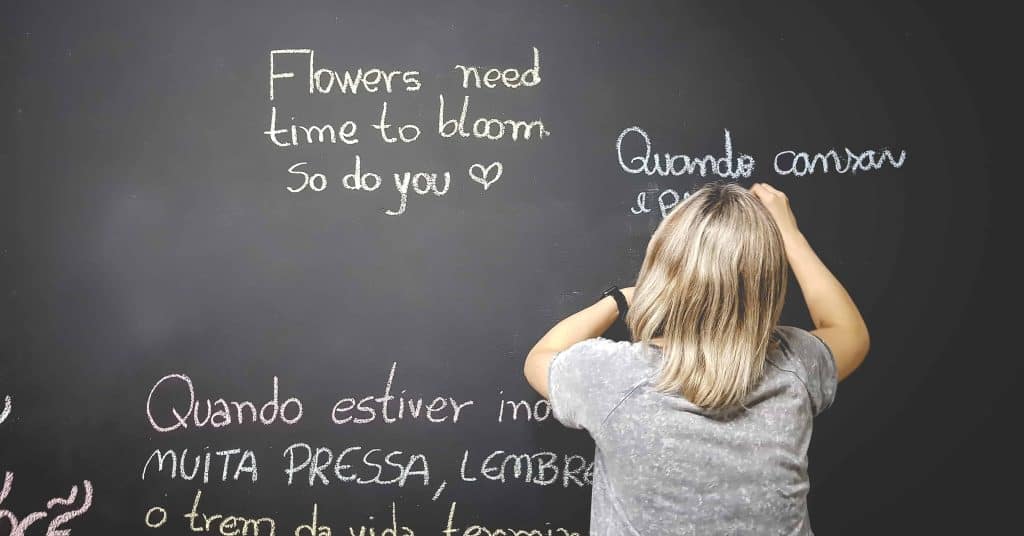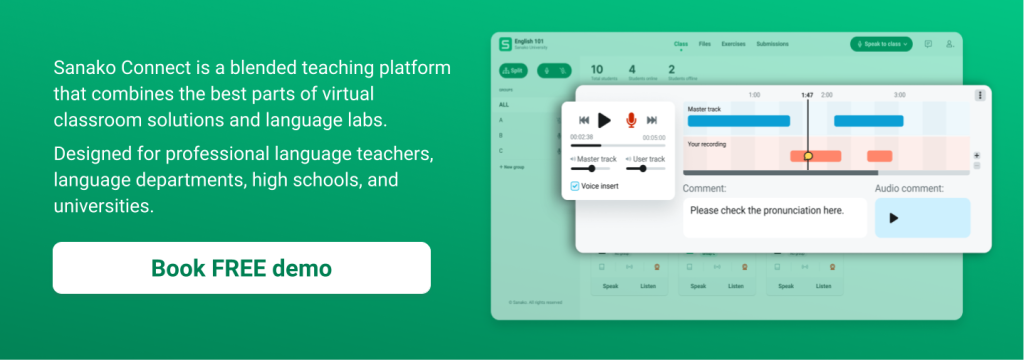Whatever level of language teaching experience you have or if you are teaching English, French Spanish or any other Foreign languages, there’s always something that can help improve your language lessons. After all, one of the best ways to act as a role model to your students is to show them that you’re always learning too! Using insight gathered from our global customer base, this Sanako blog post aims to highlight the best way to teach a language and provides helpful inspiration and tips for all language educators. Hopefully, these ideas will help you improve your teaching so that your students can develop their second language skills even further!
1 – Create a safe and positive language learning environment
Let’s face it, everyone makes mistakes when learning a new language. So it’s important that students have the confidence that they are working in an environment that sees mistakes as opportunities to learn and to improve. Be sure to ensure that students know that your classroom is a safe space, free from judgement, and one where all of their contributions are encouraged and valued.
2 – Keep constant exposure to the target language
Furthermore, try and ensure that as much communication and interaction as possible takes place in the target language. A key part of your job as a teacher will be to expose students to as much of the new language as possible as quickly as possible – this will help your students to begin using it. A good place to start could be through learning simple classroom commands such as “I don’t understand”, “Could you repeat that?” or “My name is Jennifer.”
3 – Learn to draw and visualise things and terms
To help make your explanations simple and effective, a picture can often say a thousand words. One of the best ways to teach a language is through drawing simple pictures. If it’s a cup, a cow, or a coconut, a quick sketch can be a powerful way to explain vocabulary, verbs, and adjectives, without reverting to the native language.
4 – Experiment with your classroom setup
If we’ve learnt anything during online teaching, it’s surely that educators need to be flexible and responsive to the learning that is (or isn’t) taking place in their classrooms! If the traditional setup of rows of desks with everyone looking at the teacher isn’t working, then don’t be afraid to mix it up, particularly during conversation practice. Maybe try getting students to sit back-to-back – it’s a great way to get students to listen more carefully to what their partner is saying and is commonly used when practicing telephone speech. Give it a go!
5 – Keep lesson content real and relevant
Perhaps THE best way to teach a language is to constantly ensure that your lessons support your students’ motivation for learning. The majority of your learners will be most focused on using their language skills outside of the classroom, so creating exercises that replicate real-world situations is a great way to engage your students and quickly build progress. Start with the basics – how to order food, buying a travel ticket, sending a package, asking for directions, or introducing themselves to a stranger are all great places to begin.
6 – Keep learners engaged
Learning languages is not a passive experience – it doesn’t just happen! Students need to be constantly involved and doing things in and with their target language. Learning grammar and vocabulary can be easily transformed into interactive games that require students to think quickly on their feet. Similarly, the scenarios outlined above can best be delivered as role-plays, where students take it in turn to play different characters. Scheduling such interactive language learning activities into your lessons helps students to find the learning process more entertaining and motivating. This also helps foster a positive learning attitude among your students.
7 – Get them outside
Of course, language acquisition process doesn’t just take place within the classroom environment. Provide students with the resources they need to practice their newly-found language skills outside of the classroom. If they have been learning about how to order a coffee in a cafe, then encourage them to do it for real! Keep showing students how their target language is used in the real world and practice/provide examples of how to use it accurately. This also helps them to memorise any new words better when they have first hand experience using these in real-life context.
8 – Teach the culture and the language
For many learners, understanding the language is the first part of a wider ambition to know and understand a different culture or way of life. Students want and need to know the meaning behind the language, so the best way to teach a language often puts culture front and center.
Try to use a wide variety of authentic teaching materials in the target language. There’s a role for social media, podcasts, field trips, film, TV, music produced by native speakers to make the language come alive. Watching multi-lingual programming on Netflix can certainly help. Students of many global languages can listen to conversations, check pronunciations and learn new vocabulary – all while watching the latest smash-hit series!
9 – Don’t be afraid of language learning technology!
The best way to teach a language is usually the one that best engages and supports your students. Students are increasingly looking for language courses that they can access wherever and whenever they want or need to learn, which makes digital courses and resources particularly attractive.
There’s a wealth of information and high-quality resources available for language teachers online. This recent Sanako blog post highlighted the best online resources and techniques to transform your teaching and support your students. Web-based language teaching solutions and apps like Sanako Connect are also a great way for educators to create and assign interactive language learning activities like flashcards, quizzes, vocab exercises and to share files, materials and provide feedback to students.
10 – Try different language teaching approaches
Ultimately there isn’t a single, simple answer to the question we posed at the beginning of this post. If the best way to teach a language involved doing this or trying that, it’s a safe bet that all language educators would already be using that technique in their classrooms. But for as long as all teachers and all students are different, educators will need to test different language teaching methods to see what suits them and their classes best. And the only way to find out if your students respond better in a flipped classroom or by using a task-based language teaching approach is to try it, measure the results, and go with what works best for you.
If you’re a language teacher who’s looking for inspiration to design and explore new learning paths, then do check out Sanako’s new web-based language teaching software tool, Sanako Connect! This teaching platform gives you the flexibility to deliver lessons in the classroom and remotely as well as on both synchronous and asynchronous teaching modes. Contact us now for a free remote demo to learn more!
This blog post was last updated 18 October, 2023.

